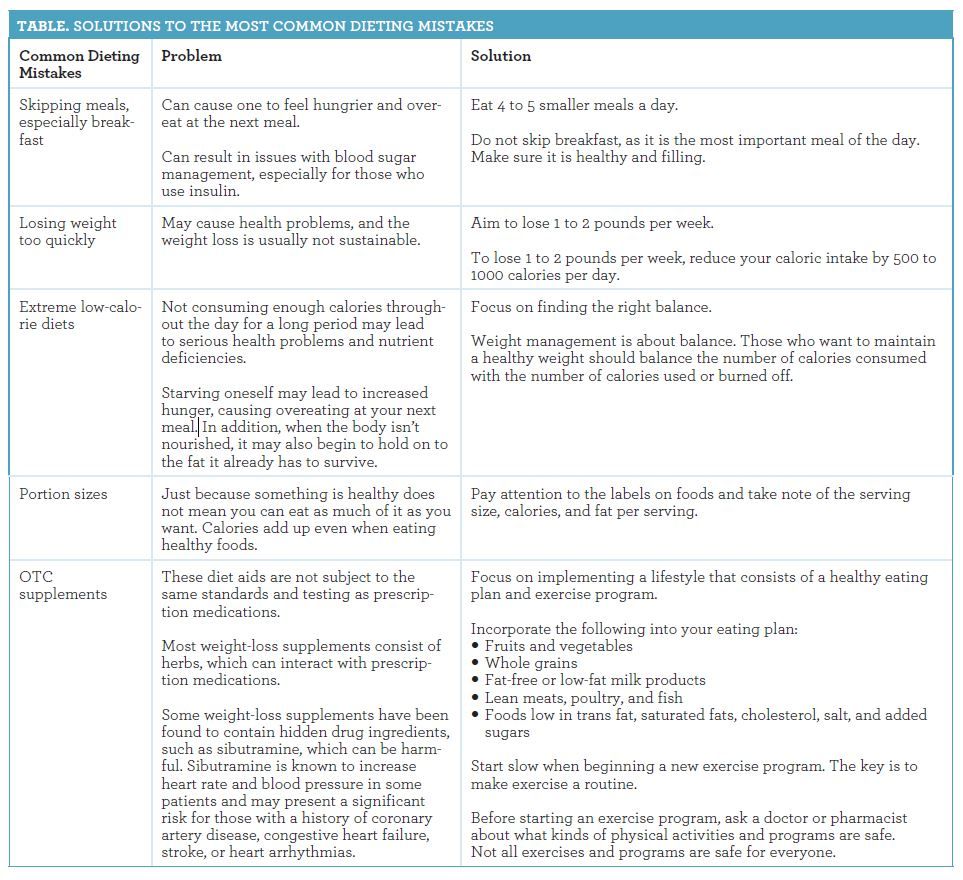Publication
Article
Pharmacy Times
Are Fad Diets Just a Fad?
Author(s):
Fad diets, just like fashion trends, come and go, except that following these diets can have much more serious consequences than landing one on the worst-dressed list.
Fad diets, just like fashion trends, come and go, except that following these diets can have much more serious consequences than landing one on the worst-dressed list.
Let’s look at some of the recent fad diets and common dieting mistakes that can put patients’ health at risk.
Fad Diet No. 1: The Detox Diet
Although detox diets vary, they typically consist of a period of fasting, followed by a strict diet of fruit and fruit juices, raw vegetables, and water. Some detox diets even consist of herbs and other supplements in combination with colon cleansing (enemas) to empty the intestines.1
There is very little evidence that show detox diets eliminate toxins from the body. The body is effective at filtering and eliminating most ingested toxins on its own. The fact that people undergoing a detox diet feel better and more energized is probably partly because this diet requires the elimination of highly processed foods that have solid fats and added sugar.1
Not only does this diet require an OK from a health care provider, it may limit the intake of protein and may require fasting that can lead to fatigue. In addition, long-term fasting can lead to mineral and vitamin deficiencies. Colon cleansing with an enema can lead to several side effects such as bloating, cramping, nausea, and vomiting.1
Fad Diet No. 2: The Raw Food Diet
This diet consists of eating only foods that are uncooked and unprocessed. The diet consists of eating raw fruits, vegetables, and grains. Although this diet sounds beneficial and can lead to weight loss, it may cause more harm than good. Not only does cooking kill harmful bacteria, it makes some food digestible and can even boost some nutrients. Because this diet consists of eating raw foods, there is a chance of food poisoning, which can be very dangerous. Although, this diet consists of fruits, vegetables, and grains, foods that are recommended in managing chronic conditions such as hypertension and type 2 diabetes, it fails to provide essential nutrients such as protein and iron, among other essentials. In addition, the raw food diet is difficult to follow long term.2
Fad Diet No. 3: The Five-Bite Diet
Developed by Dr. Alwin Lewis, this diet is exactly what it sounds like. This diet consists of skipping breakfast and limits those who follow it to 5 bites of any food at lunch and 5 bites of anything at dinner. Claiming to be the new way to shed 15 pounds in 1 week, Lewis was interviewed by Dr. Oz on his show. When asked where the 5 bites come from, Lewis said that he took the idea from surgical colleagues and settled on a “non-surgical gastric bypass.” As part of his program, Lewis says that patients do not even have to engage in a regular exercise routine.3
Fad Diet No. 4: The Fast Diet
Created by Dr. Michael Mosley, the Fast Diet consists of 5 days of normal eating with no thought to calorie control, and 2 days with a reduction in caloric intake of 500 calories for women and 600 calories for men. This intermittent diet is also known as the 5:2 fast diet. Mosley, the author of The Fast Diet, says that this diet can lead to weight loss of 1 pound each week for women. It is important to note that success depends on not over-eating on the 5 “normal days.”4
Common Dieting Mistakes
Following the most recent fad diet is not the only thing that negatively affects weight management. Making dieting mistakes often leads to frustration and to patients throwing in the towel after a few weeks. Avoiding the most common dieting mistakes can make all the difference. For solutions to the most common dieting mistakes, see the Table.

It seems as if a new diet pops up all the time promising incredible weight loss in weeks or even days. Although these fad diets may initially help patients lose some pounds, the weight loss is not sustainable and may lead to nutrient deficiencies.
Steer patients away from fad diets and OTC diet aids. Instead, recommend that patients find the right balance and follow a healthy lifestyle. Recommend that patients engage in an exercise program and follow a healthy eating plan that is effective and safe. When managing weight, it is important to note that the basic principle of weight loss is to burn more calories than are taken in. And for sustainable weight loss, the goal is to lose 1 to 2 pounds per week.
Anyssa Garza received her doctor of pharmacy degree from the University of Texas at Austin before becoming the director of pharmacy for a Central Texas Department of Aging and Disability facility. She now serves as the vice president of content and patient education programs at RxWiki. In this role, she provides patients with medication information and medical knowledge that will contribute significantly to the quality of care they receive and improve their quality of life and health outcomes. Her work focuses on educating patients and providing them with the resources they need to navigate the overwhelming and complex health system and their health care issues. She also is an adjunct assistant professor at the University of Texas at Austin College of Pharmacy.
References
- Mayo Clinic. Nutrition and healthy eating. Do detox diets offer any health benefits? Mayo Clinic website. http://mayoclinic.org/healthy-lifestyle/nutrition-and-healthy-eating/expert-answers/detox-diets/faq-20058040. Published March 17, 2015. Accessed July 31, 2017.
- Robinson, KM. Raw foods diet. WebMD website. http://webmd.com/diet/a-z/raw-foods-diet. Updated Nov. 21, 2016. Accessed July 31, 2017.
- Diet extremes, part 1 [transcript]. The Dr. Oz Show. http://doctoroz.com/episode/extreme-new-way-lose-15-pounds-one-week. April 25, 2014. Accessed July 31, 2017.
- How does the fast diet work? The 5:2 Fast Diet website. https://thefastdiet.co.uk/how-many-calories-on-a-non-fast-day/. Accessed July 31, 2017.







